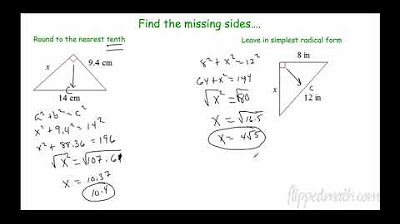ESL - Correlative Conjunctions
Summary
TLDRIn this lesson, Mr. P introduces correlative conjunctions, which are paired words like *either...or*, *not only...but also*, and *neither...nor* that connect parts of a sentence with equal importance. The video explains the rules of using correlative conjunctions, including verb-pronoun agreement and maintaining parallel structure. Through examples, viewers learn how to use these conjunctions correctly to ensure grammatical accuracy and sentence clarity. The lesson concludes with a practice section for viewers to reinforce their understanding of the concepts discussed.
Takeaways
- 😀 Correlative conjunctions are pairs of conjunctions used to connect equal parts of a sentence.
- 😀 Common examples of correlative conjunctions include 'either...or,' 'neither...nor,' 'not only...but also,' 'both...and,' and 'whether...or.'
- 😀 A conjunction is a word that connects parts of a sentence, and there are three types: coordinating, subordinating, and correlative.
- 😀 Correlative conjunctions help maintain balance in sentences by connecting similar elements.
- 😀 When using correlative conjunctions, verbs must agree with the subject they refer to after the conjunction.
- 😀 Pronouns following correlative conjunctions must agree with the noun they refer to in both number and person.
- 😀 Parallel structure should be maintained in correlative conjunction sentences to ensure clarity and consistency.
- 😀 In the sentence 'Either the horned owl or the squabbling cats wake Samantha,' the verb agrees with the plural subject 'cats.'
- 😀 In the sentence 'Neither Joe nor his friends show their concern,' the pronoun 'their' refers to 'friends.'
- 😀 It's important to ensure that both parts of the conjunction have equal grammatical structure to maintain parallelism.
- 😀 Practice examples help solidify understanding, such as 'Not only did Joe grill a fish for Mary, but he also grilled one for Tokyo.'
Q & A
What are correlative conjunctions?
-Correlative conjunctions are pairs of conjunctions that connect equal parts of a sentence, such as words, phrases, or clauses. Examples include 'either...or', 'not only...but also', 'neither...nor', and 'both...and'.
What is the main difference between correlative conjunctions and other types of conjunctions?
-The main difference is that correlative conjunctions always come in pairs, whereas coordinating and subordinating conjunctions are typically used singly to connect words, phrases, or clauses.
Can you give an example of the 'either...or' correlative conjunction?
-'Either you cook or clean the house' is an example where 'either...or' connects two options or actions.
What happens to verb agreement when using correlative conjunctions?
-The verb must agree with the subject closest to it. For example, in 'Either the horned owl or the squabbling cats wake Samantha', the verb 'wake' is plural because 'cats' is plural, but if the sentence was reversed, 'Either the squabbling cats or the horned owl wakes Samantha', 'wakes' is singular because 'owl' is singular.
How do correlative conjunctions affect pronouns in a sentence?
-Pronouns must agree with the subject they refer to. For example, in 'Neither Joe nor his friends show their concern', 'their' refers to 'friends'. In 'Neither Joe's friends nor Joe show his concern', 'his' refers to 'Joe'.
What is meant by 'parallel structure' in the use of correlative conjunctions?
-Parallel structure means maintaining equal grammatical units in both parts of the sentence connected by correlative conjunctions. For example, 'Not only did Joe grill a fish for Mary, but he also grilled one for Tokyo' follows parallel structure with two main clauses.
Can correlative conjunctions be used with prepositional phrases? Give an example.
-Yes, correlative conjunctions can be used with prepositional phrases. For example, 'Joe grilled fish not only for Mary but also for Tokyo, her cat' is a sentence with prepositional phrases connected by 'not only...but also'.
What should you ensure when using correlative conjunctions in a sentence?
-You must ensure that verbs agree, pronouns agree, and the structure remains parallel for the sentence to make sense and be grammatically correct.
What happens when you reverse the order of subjects connected by correlative conjunctions?
-Reversing the order of the subjects may change the verb form. For example, 'Either the squabbling cats or the horned owl wakes Samantha' uses 'wakes' (singular) for 'owl', whereas the reverse order would use 'wake' (plural) for 'cats'.
What is the significance of using 'both...and' in correlative conjunctions?
-'Both...and' is used to show that two items or people are included together. For example, 'Both my cousin and my best friend like ice cream' emphasizes that both individuals like ice cream.
Outlines

هذا القسم متوفر فقط للمشتركين. يرجى الترقية للوصول إلى هذه الميزة.
قم بالترقية الآنMindmap

هذا القسم متوفر فقط للمشتركين. يرجى الترقية للوصول إلى هذه الميزة.
قم بالترقية الآنKeywords

هذا القسم متوفر فقط للمشتركين. يرجى الترقية للوصول إلى هذه الميزة.
قم بالترقية الآنHighlights

هذا القسم متوفر فقط للمشتركين. يرجى الترقية للوصول إلى هذه الميزة.
قم بالترقية الآنTranscripts

هذا القسم متوفر فقط للمشتركين. يرجى الترقية للوصول إلى هذه الميزة.
قم بالترقية الآنتصفح المزيد من مقاطع الفيديو ذات الصلة

English Expressions: three-word phrasal verbs

Penggunaan Simple Present Tense dan Contohnya | Kampung Inggris LC

ESL Writing - Summarizing and Paraphrasing

Mastering the Nominative Case in German: A Complete Guide! (Beginner / A1-A2) - 1080p/Full HD 🔥

Geometry – 7.1 Pythagorean Theorem and Its Converse

Symmetrical Name Monsters with Mr. Snyder

Rounding and Working with Significant Figures in Physics
5.0 / 5 (0 votes)
